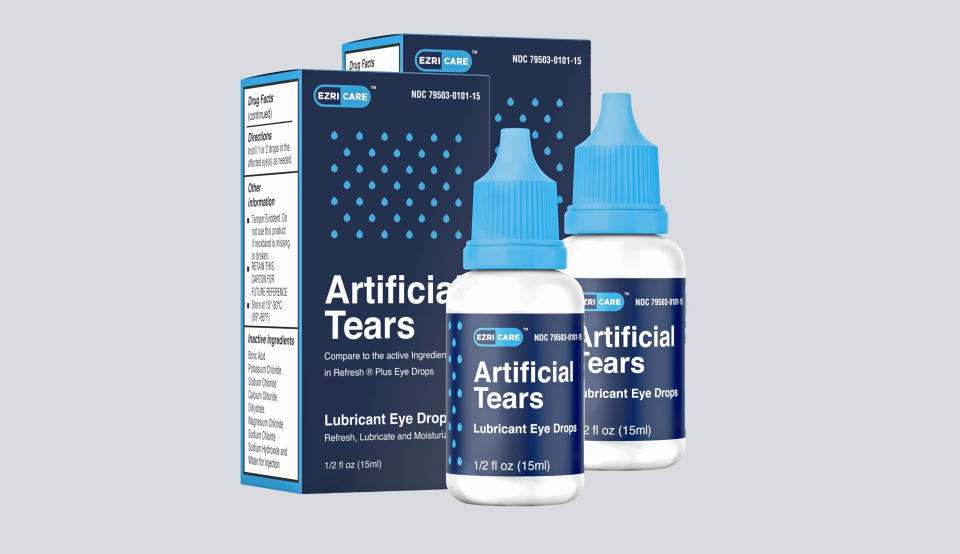EzriCare eyedrops recalled after being linked to bacterial infections
The maker of eyedrops sold under the brand name EzriCare recalled them Thursday, Feb. 2, because of possible contamination with Pseudomonas aeruginosa, a type of bacterium resistant to most antibiotics.
The EzriCare artificial tears have been linked to at least 55 cases of bacterial infection in 12 states. Five of those people so far have had vision loss. One person died when the bacteria entered the bloodstream.
Global Pharma Healthcare, which is based in India, announced the voluntary recall of its Artificial Tears Lubricant Eye Drops on Feb. 2. The recall comes after the Centers for Disease Control and Prevention urged people to immediately stop using the eyedrops.
“The product was distributed nationwide in the USA over the internet,” Global Pharma Healthcare wrote in its announcement of the recall.

The drops are distributed by EzriCare and Delsam Pharma. EzriCare said in a statement on Feb. 1 that it “had no role in the formulation, packaging delivery system or actual manufacturing of this product.” The company said it only designed the label and marketed the product.
On Feb. 1, the CDC said it is working with the Food and Drug Administration and state and local health officials to investigate the outbreak. A majority of the patients reported using the eyedrops before they became ill.
Cases have been reported in California, Colorado, Connecticut, Florida, New Jersey, New Mexico, New York, Nevada, Texas, Utah, Washington and Wisconsin, the CDC said.
CDC investigators found the bacteria in bottles of the eyedrops, and they are now doing tests to determine whether it matches the strain found in patients. It is unclear whether the contamination occurred during the manufacturing process, or when the bottles were opened by consumers. Pseudomonas aeruginosa bacteria can also be found on the hands of otherwise healthy people.
According to the CDC, symptoms of an eye infection include:
Yellow, green or clear discharge from the eye.
Eye pain or discomfort.
Redness of the eye or eyelid.
Feeling of something in your eye (foreign body sensation).
Increased sensitivity to light.
Blurry vision.
This story first appeared on NBCNews.com.
This article was originally published on TODAY.com

